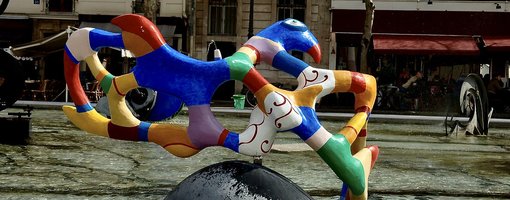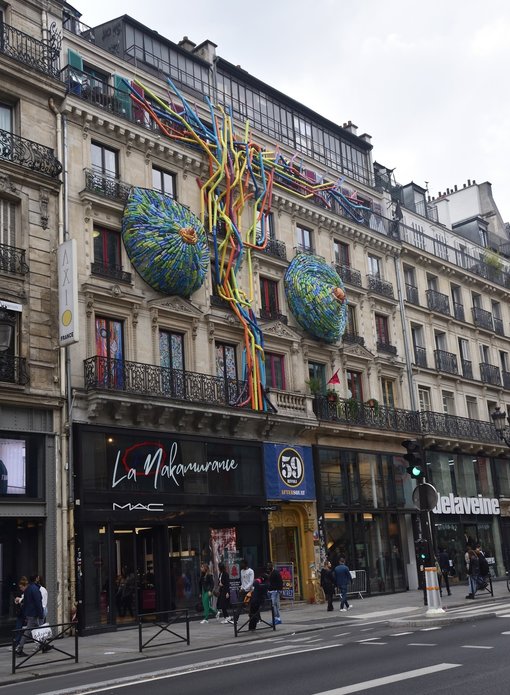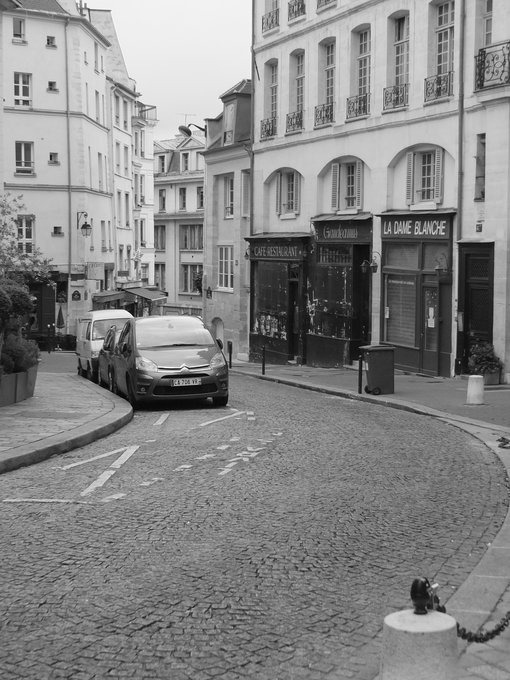"Auvers is of severe beauty and the countryside is quaint and quaint". So wrote Vincent in a letter to his brother Theo describing his impressions of Auvers-sur-Oise, a small village thirty kilometers from Paris, where van Gogh lived his last seventy days of life, painting about 100 works.
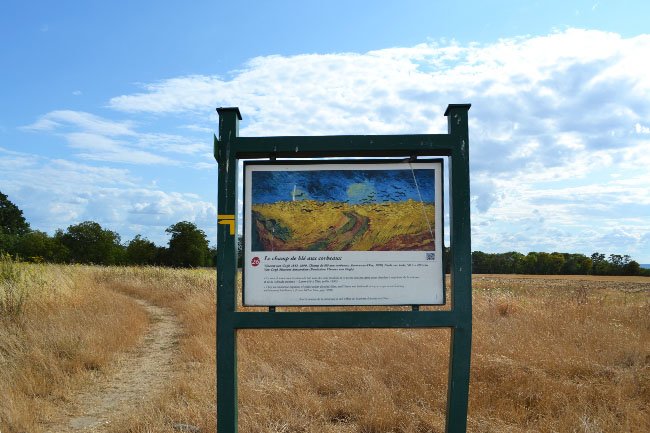
Wheat field with crows
I love van Gogh's painting with the explosion of colors it brings with it, but I also love his person, his troubled history, pain, loneliness, attention to others, dreams and the intensity of a life too short. For this reason, during my last trip to France, I went to Auvers-sur-Oise, to retrace the stages of his latest masterpieces.
The village is scattered with information panels that allow you to find your way around the places that are the subject of his paintings, all within walking distance. Strolling there are also signs with reproductions of views and buildings painted by van Gogh. A great emotion, which began for me in front of the Ravoux inn.
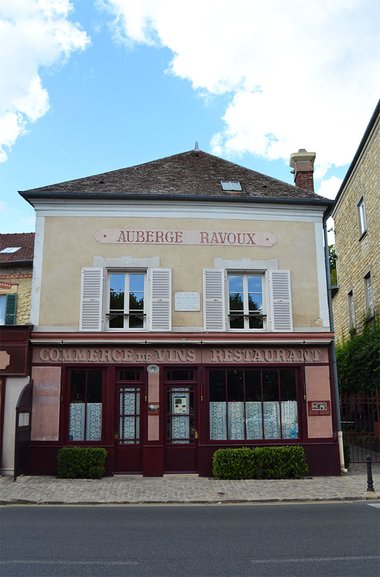
Ravoux Inn
Vincent van Gogh arrived in Auvers-sur-Oise on May 20, 1890. After spending a year in a nursing home in Saint Rémy de Provence, he wanted to settle in the north, closer to Paris and to his brother Theo. Camille Pissarro suggested that he go to Auvers-sur-Oise where Doctor Gachet lived, who could take care of his health. Vincent decided to stay at the Ravoux because it was the cheapest inn: he rented room number 5, a small 7m2 attic, and was well received by the owner, Arthur Ravoux, his family and his eldest daughter, Adeline Ravoux, of whom he painted some portraits. In room number 5 the painter died on July 29, 1890, according to the chronicles of the time for having shot himself in the stomach two days earlier. But the thesis of Vincent van Gogh 's suicide was already questioned by the famous German art historian John Rewald who visited Auvers in the 1930s and recently by a biography entitled Van Gogh: The Life, by the historians of the last century. art Steven Naifeh and Gregory Smith. The two scholars claim that van Gogh would have been killed by sixteen-year-old René Secrétan, who would have been shot by mistake from a malfunctioning pistol. On the afternoon of July 27, in the company of his brother, the young man accidentally pulled the trigger and hit the artist. Vincent did not report the boys to prevent them from being convicted. Some clues, such as the trajectory of the bullet, the position of the shot itself in the belly, a rather unusual choice for a person intent on committing suicide, or the fact that the boys were often drunk, would confirm this hypothesis. But no detailed investigations were made at the time and the case was closed as a suicide. To Dr. Gachet who, unable to extract the bullet from him, limited himself to bandaging him, declared that he had attempted suicide and refused to give explanations of his gesture to the gendarmes. With his brother Theo, who came the next morning, Vincent spent the whole of July 28 smoking a pipe and chatting sitting on the bed. It seems that his last words were: "now I would like to return. Then he passed out and died that same night, around half past one on July 29th.
Adeline Ravoux later recalled: Vincent walked bent over, holding his stomach, exaggerating once again his habit of holding one shoulder higher than the other... he crossed the hall, took the stairs and went up to the bedroom. I witnessed this scene. Vincent made such a strange impression on us that Dad got up and went to the stairs to see if he could hear anything. Thought he could hear moans, he quickly climbed up and found Vincent on his bed, lying in a crooked position... moaning loudly. "What's the problem, " said Dad, "are you sick? " Vincent then lifted his shirt and showed him a small wound in the region of the heart. Dad shouted: "Malheureux, what have you done? "
"I tried to kill myself, " Van Gogh replied.
As a suicide, the parish priest of Auvers refused to bless the body and the hearse was provided by a nearby town hall. On 30 July the coffin, covered with a white cloth and covered with yellow flowers, was lowered into a pit next to the wall of the small cemetery of Auvers: Theo, Doctor Gachet and the few friends who came from Paris attended: Lucien Pissarro, son of Camille, Emile Bernard, Père Tanguy.
The hotel has now been declared a national monument, it is called the Maison de van Gogh, and you can visit the modest room, which has been restored keeping the original furniture.
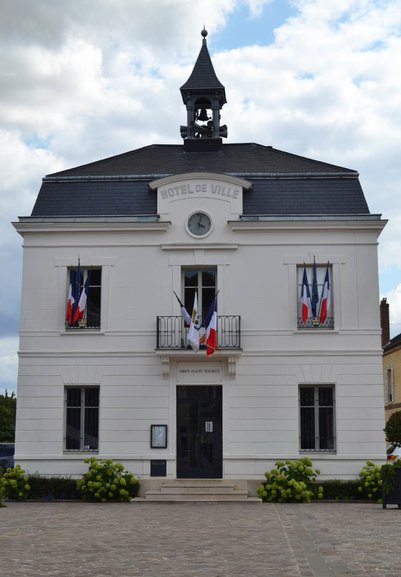
Town Hall of Auvers sur Oise
Just in front of the inn stands the Town Hall which van Gogh painted in one of his famous works.
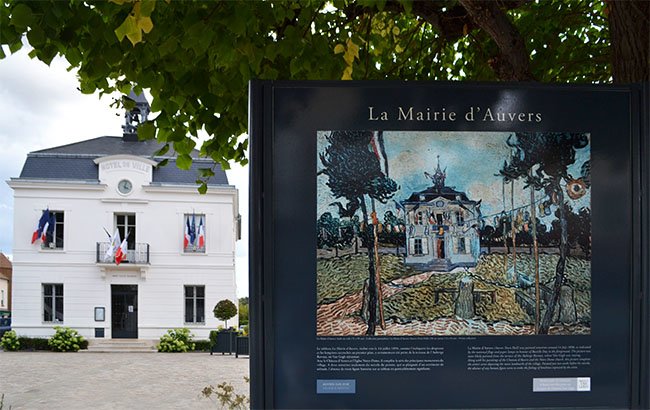
Town Hall of Auvers sur Oise
Following the indications, through the map, the signs or even the tiles with the signature of van Gogh inserted in the road surface, you continue the itinerary towards the church of Notre Dame.
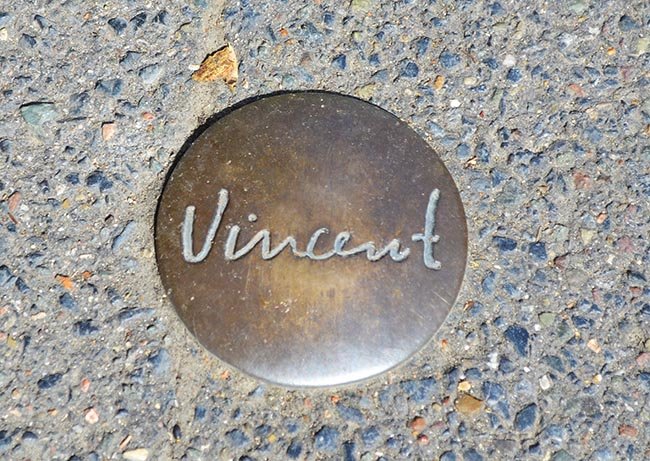
Inserts in the floor of Auvers sur Oise
I have a larger image of the village church with effect where the building appears to be purple against a sky of simple dark blue, pure cobalt; the windows look like flecks of ultramarine blue, the roof is purple and partially orange. In the background, some flowering plants and sand with the pink reflection of the sun. "So he wrote to his sister Wilhelmina on June 5, 1890.
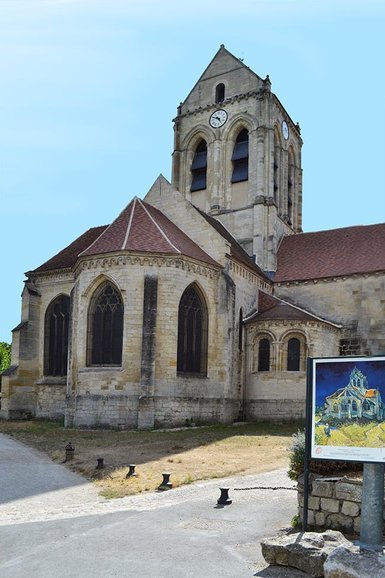
Notre Dame church
In Vincent's painting, the apse of the church becomes almost fluid, the soft and sinuous lines sway, dematerializing, and the dark blue sky with black clouds seemed very similar to the skies I saw that day, skies that change quickly with large flashes of clear blue suddenly obscured by billowing clouds. The church is not as small as I thought on the contrary, seen from the entrance staircase, it is very impressive and the interior majestic.
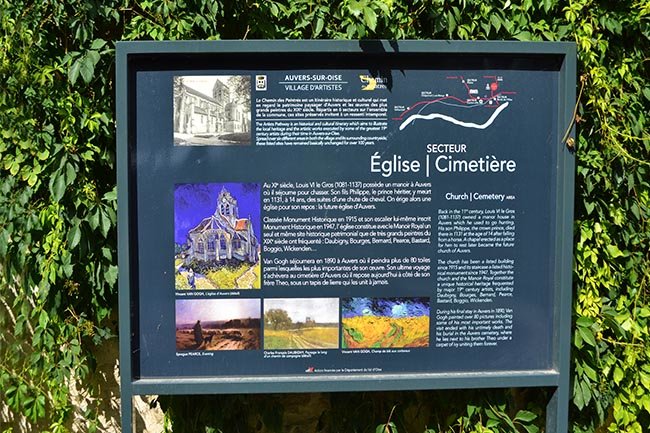
Signposts in Auvers
Not far from the church there are its last wheat fields. And among the wheat fields a small cemetery, where Vincent and Theo are buried.
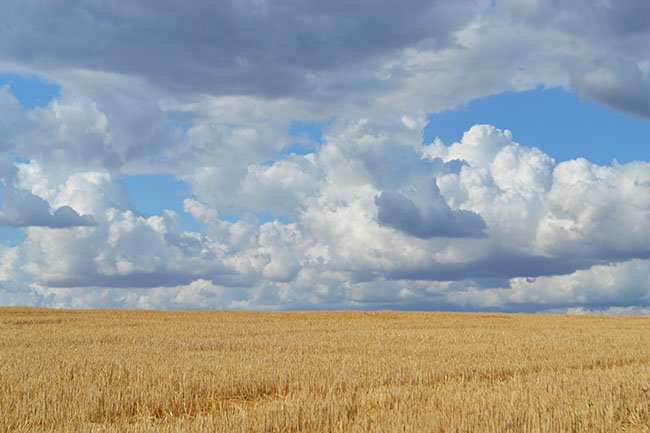
Landscape of a wheat field in Auvers
Other artists are also buried here: Norbert Goeneutte, Eugène Mürer, Léonide Bourges, the Venezuelan painter Émile Boggio and there is the commemorative plaque of O tto Freundlich, of Jewish origin, abstractionist, friend of Picasso and accused by the regime of producing degenerate art. He was deported to the Majdanek concentration camp where he was probably killed on the day of his arrival, March 9, 1943.
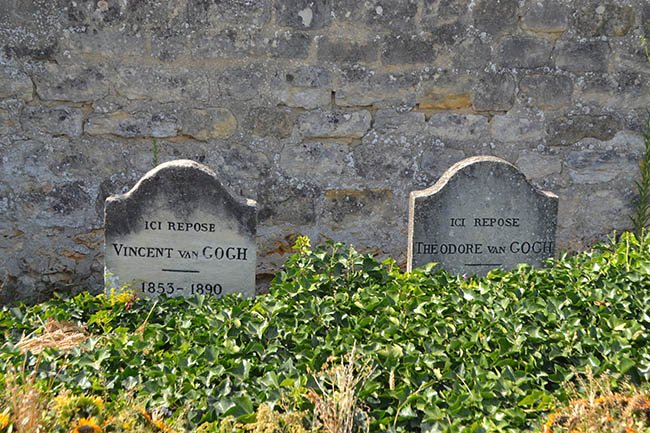
Auvers sur Oise cemetery
Leaving the cemetery, we returned to the center of the village through a field that is considered the setting for his latest painting: Wheat Field with Crows.
The Doctor Gachet, homeopath, socialist, free thinker, in favor of cremation, (opinion scandalous at the time), was a well-known character in Auvers where he lived in a villa overlooking the town. He had a degree in general medicine, but showed a particular interest in psychiatry. The fact that he had practiced his profession for a long time in Paris led him to meet many artists and his house kept several impressionist canvases. He was also an amateur draftsman, painter and engraver: it was in his house that Cezanne, Pissarro and Guillaumin made some engravings and it was on his advice that van Goghhe made his only etching, representing Doctor Gachet himself. His artistic interests and his fundamentally melancholy nature involved Vincent, who often frequented his home, portraying his daughter Marguerite and the doctor himself twice, in one of the most famous works, preserved at the Musée d'Orsay: "I work on his portrait ; the head, with a white cap, very blond, very light; also the complexion of the hands very white, a blue tailcoat and a cobalt blue background; leaning against a red table, above which there is a yellow book and a plant of foxglove with purple flowers... Gachet is absolutely fanatic of this portrait "
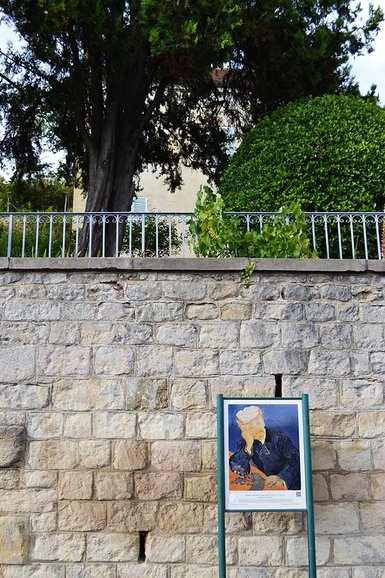
Doctor Gachet's house
The itinerary can continue with a visit to the Castle of Auvers-sur-Oise: a French-style palace surrounded by well-kept gardens where you can completely immerse yourself in the world of Impressionist painting thanks to a multimedia sensory experience called Vision Impressioniste, made up of projections and video mapping.
The Castle also regularly hosts temporary exhibitions and events including the famous " Irisiades " flower festival.
Absinthe Museum: the secrets and legendary aspects of this distillate that inspired artists and painters are told. On the first floor, a typical literary café has been reconstructed which recreates the atmosphere of the Belle Époque.
Vincent van Gogh is not the only painter who has left his mark on this village. During the 19th century a large number of artists chose Auvers as their place of inspiration: Paul Cézanne, Charles-François Daubigny, Camille Pissarro, Jean-Baptiste-Camille Corot, Charles-François Daubigny. A museum with a large collection of his paintings is dedicated to the latter. A few minutes walk from the center, at 61 Rue Daubigny, you can visit his workshop-house, open Thursday and Friday: 10.00-12.00 / 14.00-18.30, Saturday and Sunday: 14.00-18.30.










